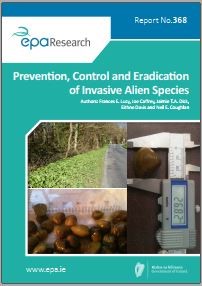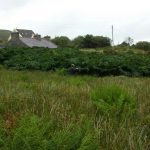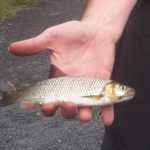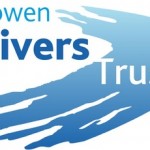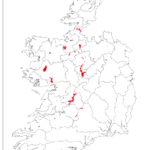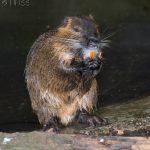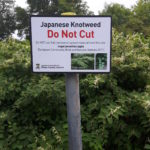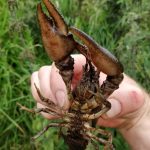Invasive alien terrestrial species are a major environmental problem and…
EPA Research 368: Prevention, Control and Eradication of Invasive Alien Species
The EPA has published the EPA Research 368: Prevention, Control and Eradication of Invasive Alien Species. Invasive alien species (IAS) are animals and plants that become introduced, either accidentally or intentionally to a region where they are not present and have serious negative impacts where they establish. This research informs policy on the prevention, early detection and rapid eradication of IAS, and their management in accordance with the internationally agreed hierarchical approach to combatting IAS.
EPA-funded research generates a scientific base to support environmental protection. Projects are carefully targeted to deliver on three key areas: Identifying pressures; Informing policy; and Developing solutions.
Identify Pressures
Invasive alien species (IASs) are animals and plants that have been introduced, either accidentally or deliberately to a region where they are not present, and have serious negative consequences where they establish. IASs are recognised globally as one of the greatest pressures on the biodiversity of terrestrial, freshwater and marine ecosystems; they also cause damage to the built environment and create considerable associated costs and challenges in terms of control and management. In recent decades, increasing international trade and travel to Ireland has heightened the ever-present risk of new introductions of IASs on this island. Implementing the management measures outlined in legislation, particularly the EU IAS Regulation (1143/2014) and the Invasive Alien Species (Enforcement and Permitting) Order (Northern Ireland) 2019, requires considerable resource from government departments and agencies. The challenge of implementing effective biosecurity to prevent introductions was evident during this research. This project used a horizon scanning method to identify 40 high-impact species that are most likely to arrive, establish and create pressures on biodiversity in Ireland in the next 10 years.
Inform Policy
This research project informs policy on the prevention, early detection and rapid eradication of IASs, and their management in accordance with the internationally agreed hierarchical approach to combatting IASs. This island’s policies on prevention, early detection and rapid eradication of IASs expected to arrive in Ireland can focus on the 40 freshwater, terrestrial and marine species identified in the project’s horizon scan. The two species considered most likely to arrive are the freshwater signal crayfish and the roe deer; a number of robust measures should now be implemented to prevent these introductions. A policy of providing a broad-based and networked communication strategy, including citizen science initiatives, was shown to be effective for educating the public on an invasive plant – the winter heliotrope. Engagement on IAS biosecurity with the farming community indicated that more outreach is required to clarify the difference between noxious weeds and invasive species. IAS codes of practice were developed to inform the management of winter heliotrope and Asian clam. These can be used by local authorities, agencies or industries as management tools to prevent the spread of these species.
Develop Solutions
Field trials carried out on winter heliotrope indicate that the most effective method for its eradication on roadsides is using a specific herbicide. Laboratory experiments on the control of a range of aquatic invasive plants and invertebrates showed that several proprietary aquatic disinfectants can be used in ‘check, clean, disinfect, dry’ biosecurity measures for recreation events on rivers and lakes. Experiments using thermal shock treatment both with and without substrate disruption caused lethal effects on Asian clams. Field trials are required to test these methods further, but they show promise for use in areas of special conservation to mitigate impacts on protected species and habitats. International databases are considered effective information tools for managing IASs. Communications outputs from this project ranged from journal articles, television programmes and workshops to Twitter and Facebook posts. Communication resulted in diverse stakeholder engagement from scientists, citizen scientists, practitioners, industry stakeholders, journalists and schoolchildren. Involvement from proactive and informed citizens who will engage with the authorities is vital for the prevention and management of IASs.
Learn more:
Authors: Frances E. Lucy, Joe Caffrey, Jaimie T.A. Dick, Eithne Davis and Neil E. Coughlan


